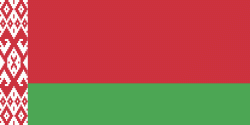Horki
 |
 |
For the first time Horki was mentioned in written sources ("The Lithuanian Chronicles") in 1544 as a village. First known owner was prince Drucki-Horski. Since 1584 Horki was owned by the Sapieha family. Kazimierz Leon Sapieha founded a new Catholic church in Horki, fulfilling the will of his father Lew Sapieha. In the 17th century the village became the center for Hory-Horki estate. Until the 19th century it was called Hory. Three markets plus annual fairs were held in Horki. In 1683 there were 510 houses and 2 service land holdings: “Kazimirovskaya Slaboda” and “Zarechye.” Administratively it was located in the Orsza County in Vitebsk Voivodeship in the Grand Duchy of Lithuania in the Polish–Lithuanian Commonwealth. During the Great Northern War Tsar Peter I of Russia stayed in Horki from July 9 to August 16, 1708.
Horki was annexed by the Russian Empire in 1772 in the course of the First Partition of Poland. Decree of the Ruling Senate on October 23, 1772 Mogilev Province was divided into four provinces - Mogilev, Mstislav, Rogachev and Orsha. Horki and surrounding areas were included in the Orsha province, and from 1777 - in Orsha district, and then Kopyssky district.
In 1840 the Horki Agricultural School was opened, and in 1848 it was transformed into the Horki Agricultural Institute. From this time Horki became the center of agricultural education in the territory of present-day Belarus. Opening of agricultural institutions contributed to the economic development of the Horki. Thus, in 1859 began working iron foundry, opened a post office (1840), pharmacy (1840), the meteorological station (1841).
On December 26, 1861 Tsarist government ordered to change status of village to status of town.
During the January Uprising, on May 6, 1863, it was the site of a battle between Polish insurgents and Russian troops, won by the Poles. In 1864, the Agricultural Institute was moved to Saint Petersburg, leaving only the agricultural and taxation schools in Horki.
State peasants, who lived in Horki, had the right to remain in the same class or go to the category of lower middle class. At the same time they would depart their land to the Ministry of State Property. For the conduct of municipal services and judicial affairs was created Horki City Council. The following year, in the Horki from Kopyss were transferred the court, district treasury, post office, city hospital, military command and other institutions. In August 1867 had approved the provision of arms of the city Horki: "... to portray in this coat of arms, as the main emblem of the city Horki, three hills, the middle higher than others, and to indicate the occupation of farming population of the city – wheat plants growing out of the tips of the hills, in the top part of the coat of arms to put Mogilev province coat of arms and decorate the tower with three prongs."
Coat of Horki and Horki district is part of the historical and heraldic monuments of Belarus. The flag is based on the stamp image. The artist was V. A. Lyahor.
During World War II, Horki was under German occupation from 12 July 1941 until 26 June 1944.
Current emblem and flag of the city approved by Presidential Decree 24 August 2006 № 526 "On establishing the official heraldic symbols of administrative and territorial units of Mogilev region."
Map - Horki
Map
Country - Belarus
 |
 |
| Flag of Belarus | |
Until the 20th century, different states at various times controlled the lands of modern-day Belarus, including Kievan Rus', the Principality of Polotsk, the Grand Duchy of Lithuania, the Polish–Lithuanian Commonwealth, and the Russian Empire. In the aftermath of the Russian Revolution in 1917, different states arose competing for legitimacy amid the Civil War, ultimately ending in the rise of the Byelorussian SSR, which became a founding constituent republic of the Soviet Union in 1922. After the Polish-Soviet War, Belarus lost almost half of its territory to Poland. Much of the borders of Belarus took their modern shape in 1939, when some lands of the Second Polish Republic were reintegrated into it after the Soviet invasion of Poland, and were finalized after World War II. During World War II, military operations devastated Belarus, which lost about a quarter of its population and half of its economic resources. The republic was redeveloped in the post-war years. In 1945, the Byelorussian SSR became a founding member of the United Nations, along with the Soviet Union.
Currency / Language
| ISO | Currency | Symbol | Significant figures |
|---|---|---|---|
| BYN | Belarusian ruble | Br | 2 |
| ISO | Language |
|---|---|
| BE | Belarusian language |
| RU | Russian language |















